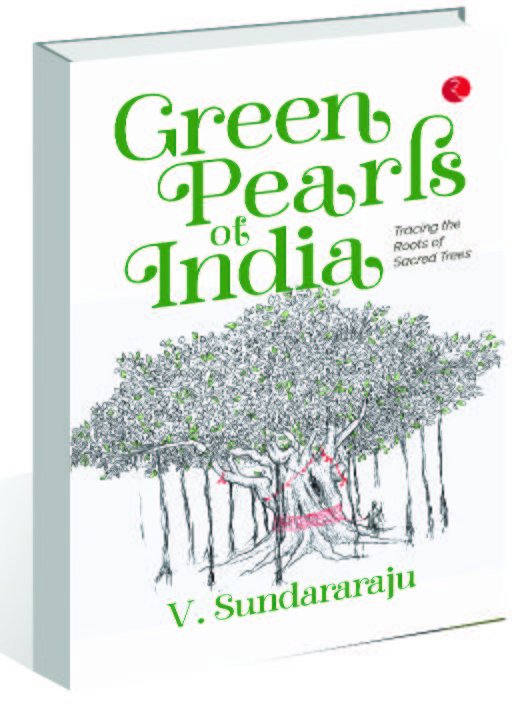Green Pearls of India: Tracing the Roots of Sacred Trees by V Sundararaju. Rupa. Pages 241. Rs 595
Book Title: Green Pearls of India: Tracing the Roots of Sacred Trees
Author: V Sundararaju
Sarika Sharma
After his victory over Humayun, Sher Shah Suri planted the chausa variety in celebration. Mango flowers are used for worshipping Goddess Saraswati. Legend has it that the god of love, Manmadan, used mango flowers as arrows to ignite love between Lord Shiva and Goddess Parvathi — the story has inspired poems and stories in both Sanskrit and Urdu. It is this mix of history, mythology, literature and science — thereby underlining the cultural, ecological, mythological and religious value of trees — that makes up V Sundararaju’s book, ‘Green Pearls of India’.
Bael, kathal, neem, coconut palm, banyan, Indian fig, mango, champaka, mahua, shalmali, palash, amla, sandalwood, jamun, tamarind, Arjuna, ber… the list is long — 27 varieties to be precise — and so is the tapestry of stories that the author, a former forest officer, weaves around them.
Each chapter gives details on the habitat and distribution of trees, their environmental, economic, historical, religious and mythological significance, various usages and cultivation practices. Tidbits abound. How bael can grow in the most dry of forests; how, in evergreen forests, mango is found usually along the streams. Jackfruit has been known in parts of India since 300 BCE and sandalwood since 1500 BCE.
From history, the author delves into mythology, narrating to the readers the stories wherein the trees have been more than a character. He then lists their medicinal properties. Here, supporting scientific studies, if any, could have been mentioned as footnotes to add value to the work.
The author traces the practice of tree worship to pre-Indus Valley Civilisation times. The primitive man revered the trees for their life-giving nature. Somewhere along the way, however, this reverence turned into faith. Man then began indulging in religious practices that turned into superstitions and the book lists so many of them. Another drawback of the book is that since the author hails from Tamil Nadu, several cultural references may not ring a bell with the readers in other parts of India.
The role of sacred trees in conservation and increasing tree cover is well-established. Nonetheless, over-exploitation happens. It has rendered the Asoka tree ‘vulnerable’, the International Union for Conservation of Nature has flagged. Extinction of any tree takes us one step closer to jeopardising our habitat. That makes all trees sacred, doesn’t it?














